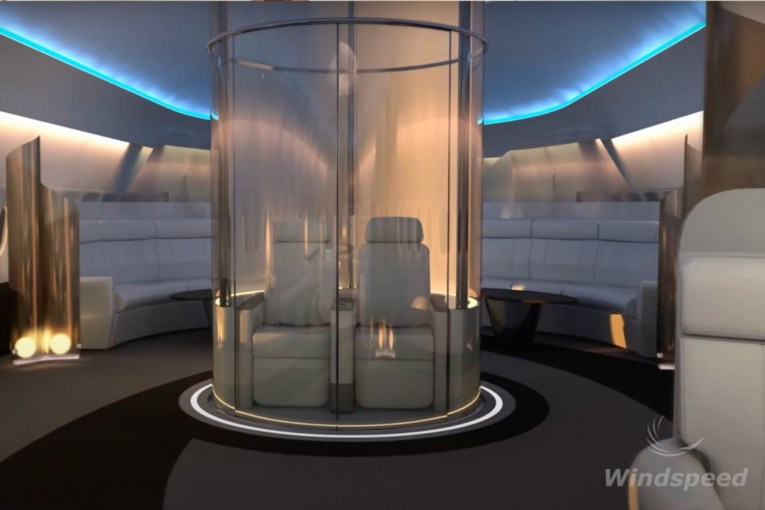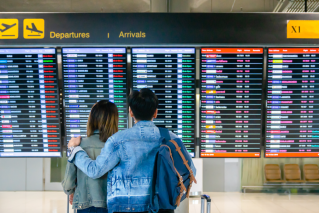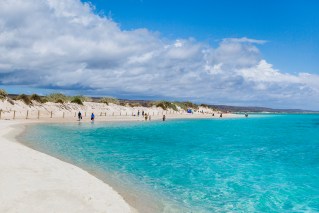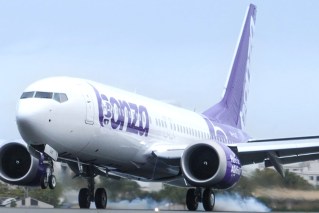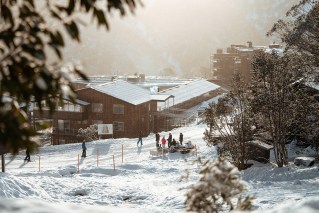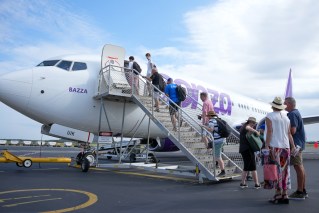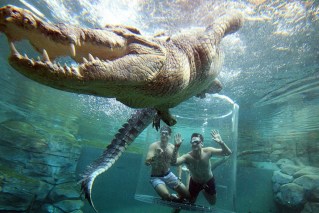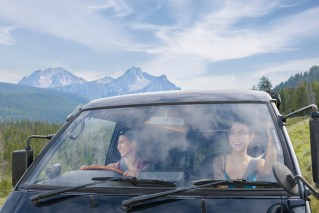The Aussie island paradise just a 2000km hop from the mainland
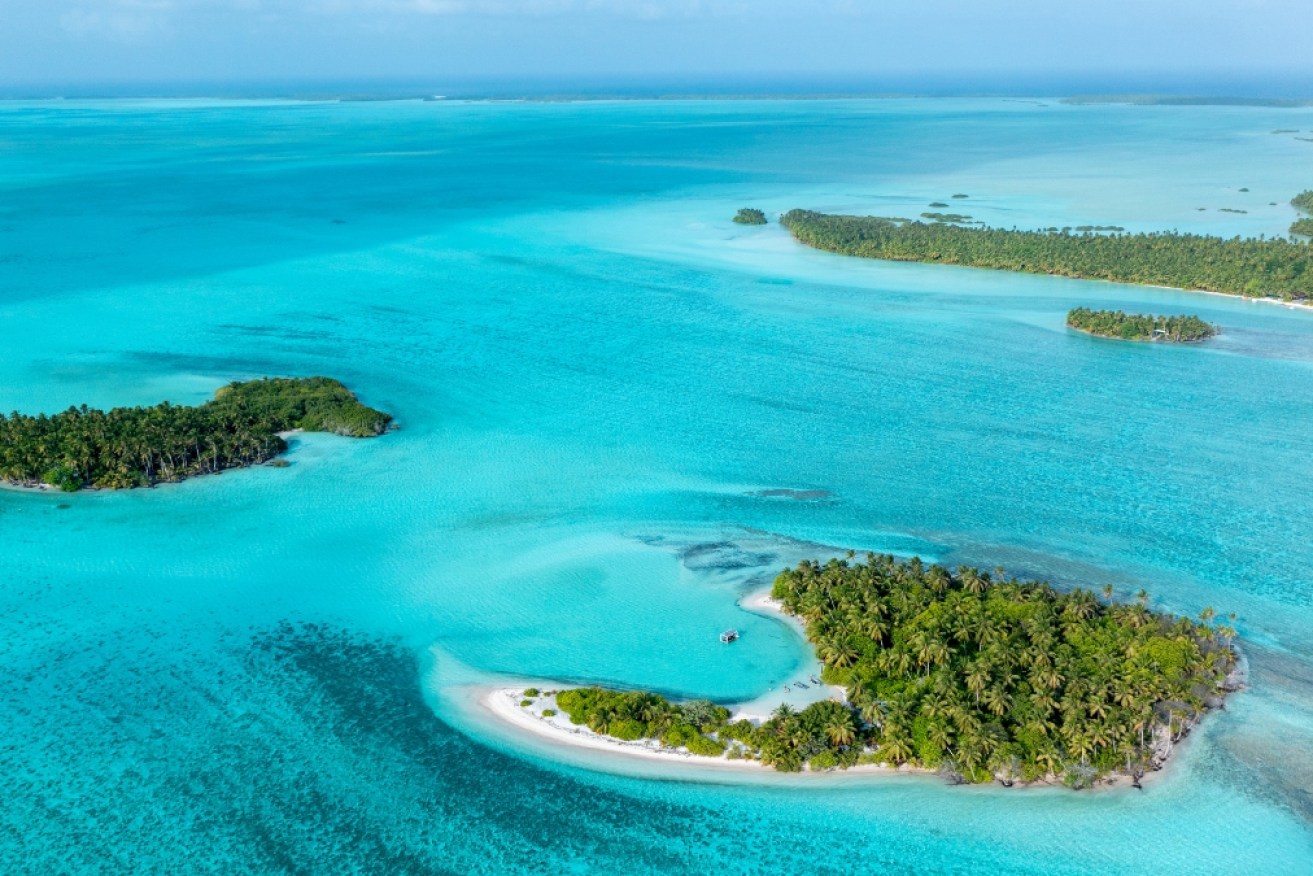
The southern atoll of the Cocos Islands. Photo: Ryan Chatfield
A sea of black diamonds moves slowly below my fins. One, two … I count 12 manta rays hovering over the ocean bed, their giant wings casting a shadow three metres wide.
The experience is absolutely surreal. But then again, so is where I am in the world.
The Cocos (Keeling) Islands are the epitome of postcard perfect. From above, Australia’s most remote territory appears as an emerald ring sparkling in the Indian Ocean. Twenty-seven low-lying islets are spread across two coral atolls, veiled with coconut palm trees, blonde beaches and blissfully blue waters teeming with marine life.
Only two of the islands – West and Home – are inhabited, with a collective population short of 600.
Each follows its own rhythm of island life: Holidaymakers on West Island and Cocos Malay culture on Home Island. The unique fusion makes Cocos a fascinating destination beyond the usual flip-and-flop outing.
But first, let’s explain the fiddly name. At various points in the past, they’ve been known as both the Cocos Islands – thanks to the plentiful coconuts – and the Keeling Islands, after Captain William Keeling, the first European who came across them on his travels, in 1609.
These days, they’re officially named The Cocos (Keeling) Islands – complete with brackets – but people tend to use simply ‘Cocos’ in conversation.
Adios civilisation
Even before boarding the flight to Cocos, it’s clear things are different in this part of Australia.
Although technically on home turf, passengers are asked to bring passports and complete an immigration form in case of a forced emergency landing, which would likely see you diverted to Jakarta, 1277 kilometres away.
It might seem like a long way, but the closest Australian airport – Exmouth – is almost double that distance, 2131 kilometres south-east.
Its remoteness also means limited access to fresh food. That doesn’t mean you’ll go hungry. There are three eateries and a supermarket on West Island, but anyone with dietary requirements is advised to bring an esky of what they need, from home.
Picking up my ute rental – handy for water sports gear and driving unsealed roads – I’m told to leave the keys in the ignition, even overnight. Losing them would, apparently, be a painful exercise.
I contemplate the fact that West Island covers just six square kilometres, so potential car thieves wouldn’t get far. But then, after misplacing my sunnies and hat on two occasions, my items return like boomerangs thanks to honest community members.
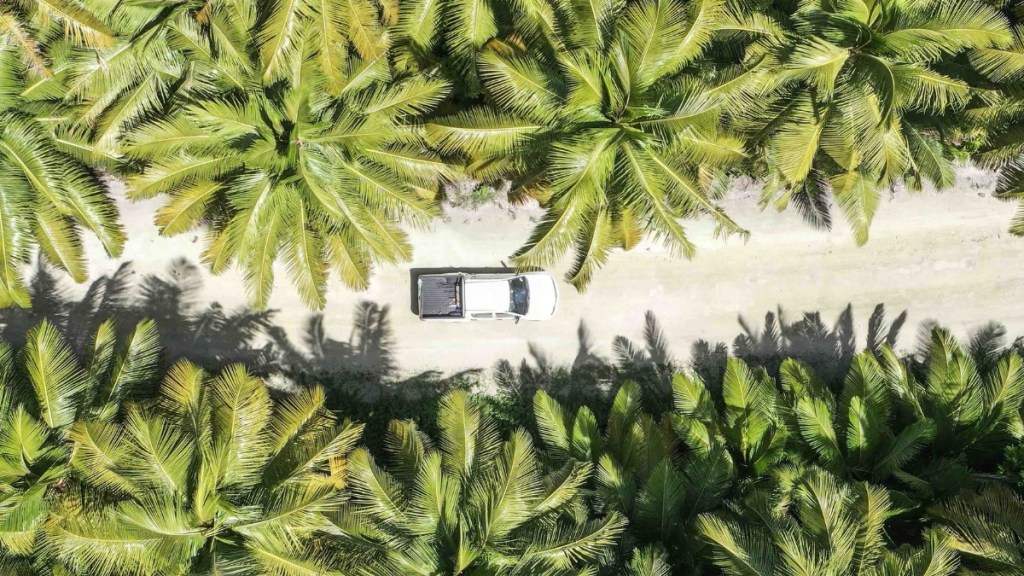
Driving around Cocos is a rugged activity.
It’s a very short drive to my accommodation at Cocos Cottages, a simple, self-contained, two-bedroom bungalow bordering the runway. Quickly entering relaxation mode on the cottage’s deck area, I see the Virgin Australia plane I barely stepped off, preparing to take off again.
“That’s the last link to civilisation,” my host tells me, as the plane jets off to Christmas Island, some 980 kilometres east.
If that sounds a touch closer to a flight path than would normally be desirable, fear not; this one doesn’t get a great deal of action. There are only two commercial flights per week, along with intermittent touch-downs from the RAFA, AFP, private jets and freight flights.
Which makes it slightly more understandable that this is home to the world’s only nine-hole golf course played over an international runway.
For now, I’m stuck with the other 143 visitors holidaying on the island at any time. Not even phone reception is a thing. The dream of being whisked away to a tropical island, banishing all rings, pings, commutes and stresses is now a reality.
Life in the lagoon
Part of Cocos’ charm is its authentic appeal, absent of fanfare. Most pleasures are found in nature, including kite surfing, scuba diving, snorkelling and fishing.
We spend a morning enjoying an e-bike tour of the island, pedalling through the plantations, and stopping for coffee and treats at the Sula Sula Servery Cafe.
Another lazy afternoon is spent paddling around the atoll in motorised kayaks courtesy of Cocosday, pulling up on uninhabited islands here and there.
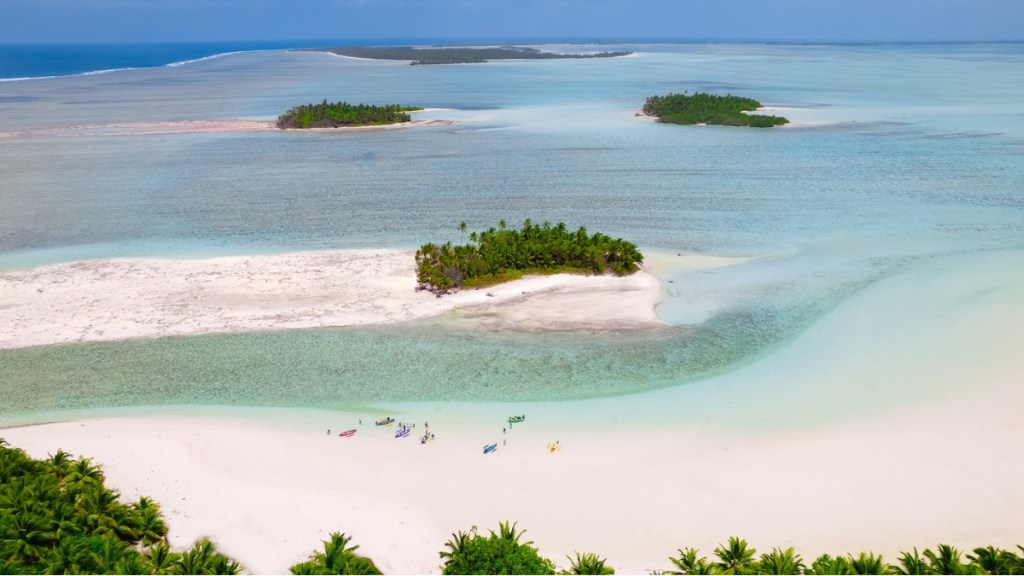
Canoeing around Cocos. Photo: Rachel Claire
In the evening, Surfer Girl Brewery is a great place to enjoy the sunset and tuck into dinner under festoon lights.
The other option, of course, is to catch some local ‘supplies’ yourself – which I do by joining skipper Pete of Cocos Blue Charters. Within minutes of casting our line in the lagoon, we reel in a coral trout big enough to feed a family of five. That’s dinner done – our guide fillets it for us to cook back at the bungalow.
The adventures continue in Cocos (Keeling) Islands Marine Park – one of the world’s largest marine conservation sanctuaries. Made up of pristine hard and soft corals, a central lagoon – the archipelago’s heart – and habitats of international significance, it’s home to all kinds of marine life, including 600 fish species and rare green turtles.
Direction Island is a local playground, a 30-minute boat ride across the marble-effect lagoon from West Island.
Many come to play starfish on the sand at Cossies Beach – voted one of Australia’s best beaches – and chase thrills at The Rip, which is an excellent spot to try drift snorkelling.
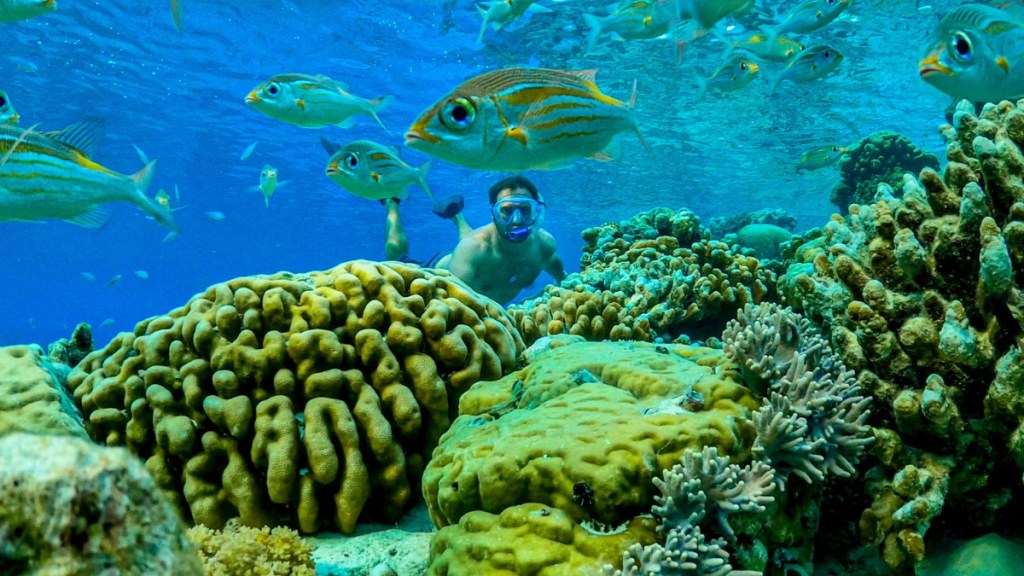
The Rip offers a water ride like no other. Photo: Rik Soderlund
I jump in at the island’s tip and instantly feel like I’m in a Dr Seuss universe. The warm current carries me over an underwater valley, past hundreds of googly-eyed fish, colourful cabbage corals and giant trevally. Rainbow fish dart from all angles, giving the clear water a neon glow, and reef sharks play peek-a-boo.
The natural joy ride gradually comes to a stop after half an hour, with Pete collecting me from still waters, to embark on our next activity: Searching for ocean diamonds.
The 5.5-metre glass-bottom boat makes it easier to spot Cocos’ friendly manta rays. As two appear in single-file formation beneath our toes, we anchor the boat and strap into snorkel and fins.
We’ve been told it’s mating season, and as we observe the male slowly meandering after a larger female, it feels a lot like being a gate crasher spying on a date.
People often consider travel an opportunity to disconnect and get away from it all. But it is in this ‘pinch me’ moment, in the middle of nowhere, with nothing but a couple of manta rays flirting in my field of vision, that I realise I have found my utopia.
Cocos Cottages is priced from $400 per night for a two-bedroom cottage with a fully equipped kitchen. Cocos Blue Charters offers half-day glass-bottom boat tours from $200 per person. Private charter is also available at $800 for up to four people.
The writer was a guest of the Cocos (Keeling) Islands Tourism Association.









